Victoria Sadler's Blog, page 15
September 30, 2014
Review: 'Teh Internet Is Serious Business', Royal Court Theatre
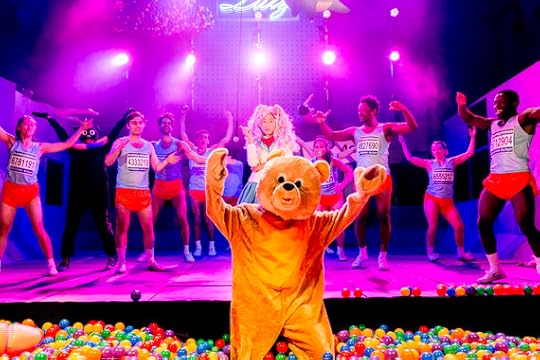
Teh Internet is Serious Business (typo deliberate) at the Royal Court is a really exciting, dynamic production about collaborative hacktivism. Anonymous, LulzSec and 4Chan are all included in this show that blurs fact with fiction as it seeks to reflect the good and the sinister about lives lived online.
The writing from Tim Price focuses on Mustafa and Jake, (based on real-life former Anonymous hackers Mustafa Al-Bassam and Jake Davis) two young boys living in different parts of the UK. Each is struggling with meaningful connection in their real lives but find excitement and alliances online as they become deeply involved in the headline-grabbing collectives Anonymous and LulzSec.
Initially the adventures are electric and the party-like atmosphere and crazy avatars of life online are vividly brought to life with surreal but superb direction from Hamish Pire and a vivid production design from Chloe Lamford.
A Socially Awkward Penguin parties with Advicedog and Grumpy Cat in a giant plastic ball pit. A Condescending Willy Wonka appears with patronising comments before immediately vanishing. 16 year-old Harajuku girls play on scooters and suck on lollipops before quickly rattling off extended and intricate sequences of computer code.
Mustafa and Jake are like modern Dorothys as they stumble wide-eyed through this colourful, crazy landscape where the freedom and excitement is an intoxicating lure away from their drab, distressing and grim lives in the real world.
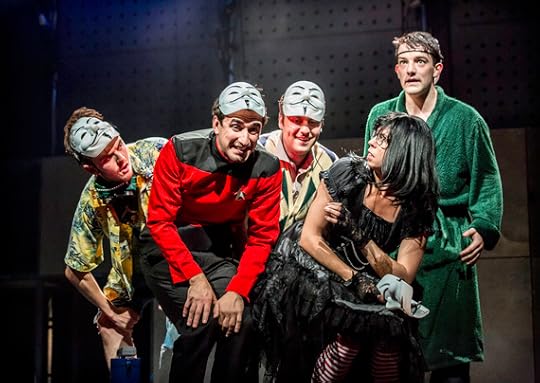
The party online is "endless lols." Crashing government websites, hacking confidential information for giant data dumps that anyone can access and going head-on with organisations obsessed with control such as the Scientologists and Westboro Baptist Church.
The pace of the play is frenetic and the febrile atmosphere is supported with some excellent use of song and dance. Tunes such as "I Use the Same Password" are hilarious yet poke fun at the stupidity in all of us who aren't computer geniuses and use the same password again and again, thinking that we're safe. (Mental note: change password).
Then a cast of cheerleaders will suddenly appear as huge lines of code are being created, moving in contemporary dance choreography as the characters spout endlessly about closed brackets and open brackets, making the banal seem sensual, emotive, and lending code with a certain kind of beauty all of its own.
But Teh Internet does not ignore its dark side - and I don't just mean the Sad Stromtrooper avatar that mopes around the stage. Trolling the Facebook page of a schoolgirl who dies and the demands for girls online to prove their gender by posting date-stamped pictures of their breasts hint at the sinister side of unchecked human behaviour.
But as the competition ferments amongst the hacktivists, the targets become bigger and the stakes, of course, get higher as the authorities start to pull back the masks of the hackers and close in on them.

However it seems the play isn't for everyone. Two people walked out during the evening I was watching - one in the first half, one in the second. If your preference is for plays with deep character development, linear narrative and simplistic staging, this isn't the play for you. Teh Internet is Serious Business is garish and the chaos on stage is a deliberate dramatization of the lack of rules, even the mess, online.
The production is so high energy that it almost inevitably loses steam in the final section and the last 30 minutes does drag on a bit. You feel a little numb from all the insanity and the lack of investment in the main characters means that the personal stakes for the hackers don't really feel pressing. 15 minutes could easily have been chopped from the play's 2h35min running time without impacting the message and would have sharpened up the finale.
Nevertheless I'm not as critical of this as a few of the audience members I heard muttering. If you're going to produce a show this eccentric, this bold, you've got to commit to it and this play goes hell for leather in creating such a mad, bad and electric landscape.
I loved Teh Internet for its boldness and its insight, though I did go home straight after and start diversifying my passwords.
The real-life Mustafa and Jake recently joined two other former Anonymous hackers on the Royal Court for an in-conversation event, the first time they have appeared together since their convictions for hacking. The conversation was an eye-opening one and you can see the recording of this on the Royal Court website.
Royal Court Theatre, London to October 25, 2014
Image credits:
All pictures by Johan Persson
1. Yuyu Rau (Anonymous), Natalie Dew (Anxiety Cat), Sargon Yelda (Anonymous), Amir Giles (Anonymous), Ferdinand Kingsley (Anonymous), Kae Alexander (Kayla), Sarah Goulding (Anonymous), Nathaniel Martello-White (Anonymous), Faith Prendergast (Anonymous), Lanre Malaolu (Anonymous)
2. Kerr Logan (pwnsauce), Ferdinand Kingsley (Tuxedo), Sargon Yelda (Anon), Eileen Walsh (Narcotroll), Kevin Guthrie (Jake)
3. Hamza Jeetooa (Mustafa), Nathaniel Martello-White (Sabu), Natalie Dew (AV Unit), Kae Alexander (Kayla), Kerr Logan (Pwnsauce), Kevin Guthrie (Jake)
Published on September 30, 2014 01:28
September 26, 2014
Stunning Anselm Kiefer Exhibition at Royal Academy
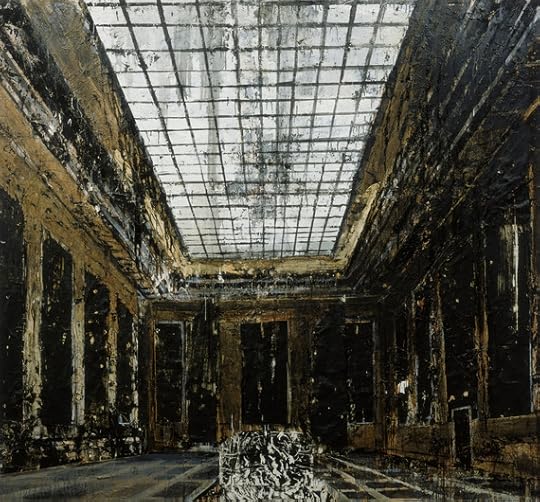
Anselm Kiefer is widely considered to be the most influential artist working today. However he is not a household name. With this in mind, this new exhibition at the Royal Academy succeeds in not only showcasing a broad range of Kiefer's extraordinary work, but also in bringing much depth and context to the pieces on show.
This is the first retrospective of Kiefer's work ever in the UK and the galleries are filled with his huge canvases from across his 40 year career to date. The canvases are vast, often covering an entire wall, and include just about every element going whether it's paint, lead, diamonds or sunflowers.
But it's the content, the premise of Kiefer's work that gives it its power. For Kiefer was born in Germany in 1945 and this location and timing is everything when examining Kiefer's art.
The shadow of Nazism loomed large over post-war Germany, its bloody legacy incredibly hard for Germans to come to terms with. In Kiefer's eyes, this had developed into a worrying culture of silence, fear and denial. Kiefer was fascinated by this collective absence of memory and was driven to address this head on.
Much of Kiefer's early work is explicit in this. In the Heroic Symbols series and his Occupation books, Kiefer incorporates figures in German army uniform giving the Nazi salute, an act that was banned in post-war Germany. The expected outcry and accusations of Nazi sympathy happened but this was more than just being deliberately provocative for the sake of attention.
Censorship is always a red flag to an artist and the fact that these subjects were considered verboten angered Kiefer but his work also perfectly demonstrated how this complicity of silence ensured that these acts, and therefore Nazism, retained a power, a hold over people.
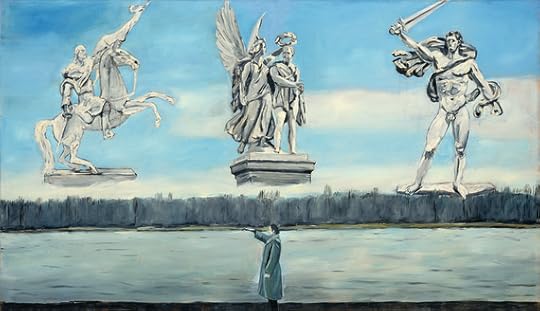
Kiefer's work was also an attempt to reclaim the artistic space that had been occupied by the Third Reich, who exploited art and artists for propaganda purposes.
Kiefer's later works have much variety and depth - he worked on interiors and landscapes and examined themes such as man's place in the world, the legacy of history and mythology, and even the universe itself - but Nazism remained a reoccurring subject.
A favourite of mine is Varus, 1976, a beautiful oil on canvas of a picturesque German forest covered with snow. A traditional winter scene in a traditional German forest, but the snow is spattered with blood and the trunks of the trees seem to be bleeding.
The title of the painting refers to the legend of Varus, the Roman general who was defeated by Arminius in the German forests in AD9. So far, so simple. But Arminius is a German legend and his reputation was used and manipulated by the Third Reich as part of their appropriation of German heroes to exalt National Socialism. Further, snow and ice are often used as metaphors for the Holocaust.
A similar approach comes up again 30 years later in Black Flakes (Schwarze Flocken), 2006, an oil on canvas of a ploughed, furrowed snow-covered field, with the barbed wire a haunting reminder of the camps.
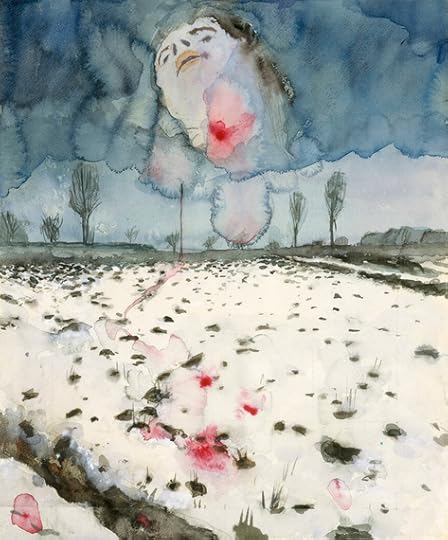
Kiefer's canvases are truly extraordinary. They contain within them such power, such emotion, that it's hard not to be moved by them. They are so vast, literally and metaphorically, that they often require time and contemplation. Sadly the RA hasn't provided sufficient benches in the galleries to facilitate this in comfort so wear comfortable shoes!
But for all the power and politics, there is a versatility in Kiefer's work that the scale of the exhibition really brings out.
Kiefer has created a new installation for this show, Ages of the World, 2014. This piece is a towering pile of discarded objects, such as wood and large sunflowers, and it consumes the room in which it is displayed. Part totem, part funeral pyre, the piece examines the relationship of ruins and the ongoing pattern and cyclical nature of time.
The piece reminded me of Phyllida Barlow's current installation in Tate Britain in the way that the structures of discarded materials assembled together in a rather undefined way is an interesting juxtaposition with the classical elegance of the Royal Academy's interior design.
Kiefer also brings out his dreamy, romantic side in a series of large lead sheets that he has scattered with diamonds, which he has set into the materials. They sparkle like bright stars in the night sky.
Yet for all the emotion in Kiefer's work, it's hard to ignore the technical excellence. Whether it's interiors or exteriors, bricked mausoleums or wooden floorboards, his execution is faultless.
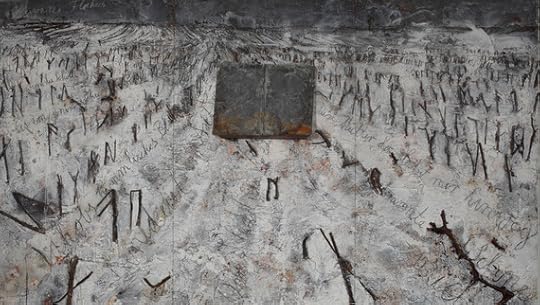
And his compositions are fascinating, whether it's simply in the perspective taken or in the occasionally surreal merging of objects, such as a floating suspended human head in a German forest in Head in the Forest, or the three vacant seats representing the Father, the Son and the Holy Ghost hovering above a planned Nazi naval attack against Britain in Operation Sea Lion, 1975.
But such is the texture and scale in Kiefer's work that no flat image could possibly do it justice. This exhibition is a definite go-see as it's crucial you see these works for yourself so you can take it all in. It's an exhilarating, passionate exhibition that needs to be seen and felt in person.
And please do not be put off if you know little or indeed nothing about Anselm Kiefer. This is a superbly curated exhibition. The pieces are hung in chronological order and there is much explanation and context given in each room to outline the pieces and what Kiefer was exploring at that time.
Royal Academy of Arts, London to December 14, 2014
Admission £15.50 (concessions available)
Sponsored by BNP Paribas
Image credits:
1. Anselm Kiefer Interior (Innenraum), 1981 Oil, acrylic, and paper on canvas, 287.5 x 311 cm Collection Stedelijk Museum, Amsterdam Photo Collection Stedelijk Museum / copyright Anselm Kiefer
2. Anselm Kiefer Heroic Symbol V (Heroisches Sinnbild V), 1970 Oil on canvas, 150 x 260.5 cm Collection Wuerth Photo Collection Wuerth / copyright Anselm Kiefer
3. Anselm Kiefer Winter Landscape (Winterlandschaft), 1970 Watercolour, gouache, and graphite pencil on paper, 42.9 x 35.6 cm Lent by the Metropolitan Museum of Art, Denise and Andrew Saul Fund, 1995 (1995.14.5) Photo copyright 2014. Image copyright The Metropolitan Museum of Art/Art Resource/Scala, Florence / copyright Anselm Kiefer
4. Anselm Kiefer Black Flakes (Schwarze Flocken), 2006 Oil, emulsion, acrylic, charcoal, lead books, branches and plaster on canvas, 330 x 570 cm Private collection, c/o Museum Kueppersmuehle fuer Moderne Kunst Photo Privatbesitz Famille Grothe / copyright Anselm Kiefer
Published on September 26, 2014 03:05
September 22, 2014
All Hail the Queen: Kate Bush Returns in Before the Dawn
So let's say this straight: Before the Dawn is simply the most original, most extraordinary music concert I've ever seen. And that's before you take into account the magnitude that this is Kate Bush's return to the stage after a 35-year absence.
No doubt you've heard much about this show already. The mobile phone ban, at Kate's request, I already knew about, as well as the fact that the audience sit throughout the show. It's also true she sings Hounds of Love and Running Up that Hill and that she doesn't sing Wuthering Heights or This Woman's Work. Or The Sensual World. Or The Man with the Child in his Eyes.
But none of this is as much a disappointment as you'd expect as this is no ordinary concert. This is no sing-through of Kate's greatest hits. No. Before the Dawn is theatre.
Incredibly, boldly, Kate sets aside an orthodox playlist in preference for a three-hour piece of theatre that's as much an exploration of the human subconscious as it is a showcase for Kate's illustrious back catalogue.
The first 30 minutes are deceptive, running as it is much like any other music concert. Only with Kate Bush. A barefoot Kate and her band take to the stage promptly at 7.45pm, are greeted with a thunderous round of applause and then launch into the early part of the setlist (which is where Hounds of Love and R.U.T.H. come in).
Her voice is so strong, so powerful and as beautiful as you'd imagine. All going much as you'd expect but then suddenly, midway through King of the Mountain, the production abruptly cuts out.
And that's where the theatre begins.
A video of a troubled astronomer phoning the coastguard is projected across the back of the stage. The astronomer inadvertently overheard a distress call from a sinking ship and is urging the coastguards to send out a rescue helicopter.
This scene then dissolves to be replaced with a video of Kate, life belt around her, battling to stay afloat in a dark ocean. And I Dream of Sheep starts up, Kate is submerged by the water and The Ninth Wave starts.
The next hour is an extraordinary piece of musical theatre. The bare set is transformed into the ocean and surreal fish with skeleton heads stalk the stage as Kate's dreams and nightmares manifest themselves in front of us
For great swathes of this section, Kate barely sings a note. The music is an accompaniment to the theatre, not the other way round. Through magical illusion she comes and goes from the stage as the band work through The Ninth Wave score from Hounds of Love.
I cannot think of another artist who would walk away from an orthodox setlist in preference for showcasing a story, certainly not for this amount of time. And it's so intriguing. You don't turn your head away. Whether it's the sequence where father and son wait at home for their missing mother or where the decaying fish close in on Kate in the water.
Kate eventually returns and brings the energy back to the stage with the closing numbers of The Ninth Wave - Jig of Life, Hello Earth and The Morning Fog.
The second half of the show is set around the sequence of songs known as A Sky of Honey from her album Aerial. The darkness of The Ninth Wave is replaced with the joy of the sky, the sun and birdsong. A huge impressionistic view of a bright sky with fluffy white clouds transforms the stage as an artist and his model form the narrative basis for this part of the show.
Kate has the audience in the palm of her hand and there's no mistaking she is the star of the show but a mention must also go to the vast design and production team who have weaved together puppetry, video footage, elaborate set design and an eccentric cast of characters including painters, walking dead fish and winged humans to provide the perfect context and visual imagery for Kate's music.
That's not to say that this concert is perfect though. Kate Bush has made no secret that a key reason behind this sudden and surprising return to the stage was to provide a platform for her son, Bertie.
However that commitment really is the sign of a mother's love as not only is Bertie a supporting member in the ensemble but he is also given five minutes for a solo performance. And it's a long five minutes. However he is still young so there is time for his voice and his stagecraft to develop.
But once that indulgence is swept aside the finale of the show is breathtaking. Kate returns to the stage alone, takes a seat at the piano and without any accompaniment, without another soul on stage, she sings Among Angels from 50 Words for Snow.
The song is a beautiful one and as a showcase for that beautiful voice of hers, it could not be beaten. All of us in the Apollo sat in hushed awe as we hung on every word and every note of this song.
And then as a finale there was Cloudbusting. And what a finale! The start of the violins was met with a roar of approval and finally our seated reverence was discarded. Up on our feet, we sang "yay yay yay yo" as Kate added her "cloudbusting, daddy" again and again over the top. It's a moment that will stay with me forever.
It was a rousing end to what will very much be a once in a lifetime experience. I know how fortunate I was to get hold of tickets, as did many others. There were a few wet eyes as Kate took her bow on stage. Bunches of flowers were passed up from the audience and again and again, Kate waved, shuffling her feet slowly towards the exit.
The fact that she seemed so genuinely surprised, so moved by how much she was loved, the more you loved her. Her reluctance to leave the stage was obvious. She would wave some more, and shuffle a little bit closer to the exit until slowly, eventually, she left.
Glib as it sounds, it really was an honour and a privilege to see Before the Dawn. It simply is the most unique and original concert I've ever seen. Yes, she was amazing. Her voice was just beautiful but it's a testament to Kate Bush's extraordinary vision and artistic creativity that even after all this time, and all these years, that she returns with a live show that in terms of imagination and ingenuity, leaves all others in the dust.
I know tickets are close to impossible to come by but it's worth noting that there is a standby queue each day outside the Apollo for returns and tickets that for, whatever reason, are found on the day. I know some people are getting in to see the show that way but the queue does start early.
Eventim Apollo Hammersmith, London to October 1, 2014
No doubt you've heard much about this show already. The mobile phone ban, at Kate's request, I already knew about, as well as the fact that the audience sit throughout the show. It's also true she sings Hounds of Love and Running Up that Hill and that she doesn't sing Wuthering Heights or This Woman's Work. Or The Sensual World. Or The Man with the Child in his Eyes.
But none of this is as much a disappointment as you'd expect as this is no ordinary concert. This is no sing-through of Kate's greatest hits. No. Before the Dawn is theatre.
Incredibly, boldly, Kate sets aside an orthodox playlist in preference for a three-hour piece of theatre that's as much an exploration of the human subconscious as it is a showcase for Kate's illustrious back catalogue.
The first 30 minutes are deceptive, running as it is much like any other music concert. Only with Kate Bush. A barefoot Kate and her band take to the stage promptly at 7.45pm, are greeted with a thunderous round of applause and then launch into the early part of the setlist (which is where Hounds of Love and R.U.T.H. come in).
Her voice is so strong, so powerful and as beautiful as you'd imagine. All going much as you'd expect but then suddenly, midway through King of the Mountain, the production abruptly cuts out.
And that's where the theatre begins.
A video of a troubled astronomer phoning the coastguard is projected across the back of the stage. The astronomer inadvertently overheard a distress call from a sinking ship and is urging the coastguards to send out a rescue helicopter.
This scene then dissolves to be replaced with a video of Kate, life belt around her, battling to stay afloat in a dark ocean. And I Dream of Sheep starts up, Kate is submerged by the water and The Ninth Wave starts.
The next hour is an extraordinary piece of musical theatre. The bare set is transformed into the ocean and surreal fish with skeleton heads stalk the stage as Kate's dreams and nightmares manifest themselves in front of us
For great swathes of this section, Kate barely sings a note. The music is an accompaniment to the theatre, not the other way round. Through magical illusion she comes and goes from the stage as the band work through The Ninth Wave score from Hounds of Love.
I cannot think of another artist who would walk away from an orthodox setlist in preference for showcasing a story, certainly not for this amount of time. And it's so intriguing. You don't turn your head away. Whether it's the sequence where father and son wait at home for their missing mother or where the decaying fish close in on Kate in the water.
Kate eventually returns and brings the energy back to the stage with the closing numbers of The Ninth Wave - Jig of Life, Hello Earth and The Morning Fog.
The second half of the show is set around the sequence of songs known as A Sky of Honey from her album Aerial. The darkness of The Ninth Wave is replaced with the joy of the sky, the sun and birdsong. A huge impressionistic view of a bright sky with fluffy white clouds transforms the stage as an artist and his model form the narrative basis for this part of the show.
Kate has the audience in the palm of her hand and there's no mistaking she is the star of the show but a mention must also go to the vast design and production team who have weaved together puppetry, video footage, elaborate set design and an eccentric cast of characters including painters, walking dead fish and winged humans to provide the perfect context and visual imagery for Kate's music.
That's not to say that this concert is perfect though. Kate Bush has made no secret that a key reason behind this sudden and surprising return to the stage was to provide a platform for her son, Bertie.
However that commitment really is the sign of a mother's love as not only is Bertie a supporting member in the ensemble but he is also given five minutes for a solo performance. And it's a long five minutes. However he is still young so there is time for his voice and his stagecraft to develop.
But once that indulgence is swept aside the finale of the show is breathtaking. Kate returns to the stage alone, takes a seat at the piano and without any accompaniment, without another soul on stage, she sings Among Angels from 50 Words for Snow.
The song is a beautiful one and as a showcase for that beautiful voice of hers, it could not be beaten. All of us in the Apollo sat in hushed awe as we hung on every word and every note of this song.
And then as a finale there was Cloudbusting. And what a finale! The start of the violins was met with a roar of approval and finally our seated reverence was discarded. Up on our feet, we sang "yay yay yay yo" as Kate added her "cloudbusting, daddy" again and again over the top. It's a moment that will stay with me forever.
It was a rousing end to what will very much be a once in a lifetime experience. I know how fortunate I was to get hold of tickets, as did many others. There were a few wet eyes as Kate took her bow on stage. Bunches of flowers were passed up from the audience and again and again, Kate waved, shuffling her feet slowly towards the exit.
The fact that she seemed so genuinely surprised, so moved by how much she was loved, the more you loved her. Her reluctance to leave the stage was obvious. She would wave some more, and shuffle a little bit closer to the exit until slowly, eventually, she left.
Glib as it sounds, it really was an honour and a privilege to see Before the Dawn. It simply is the most unique and original concert I've ever seen. Yes, she was amazing. Her voice was just beautiful but it's a testament to Kate Bush's extraordinary vision and artistic creativity that even after all this time, and all these years, that she returns with a live show that in terms of imagination and ingenuity, leaves all others in the dust.
I know tickets are close to impossible to come by but it's worth noting that there is a standby queue each day outside the Apollo for returns and tickets that for, whatever reason, are found on the day. I know some people are getting in to see the show that way but the queue does start early.
Eventim Apollo Hammersmith, London to October 1, 2014
Published on September 22, 2014 05:51
September 19, 2014
Constable: The Making of a Master at the V&A
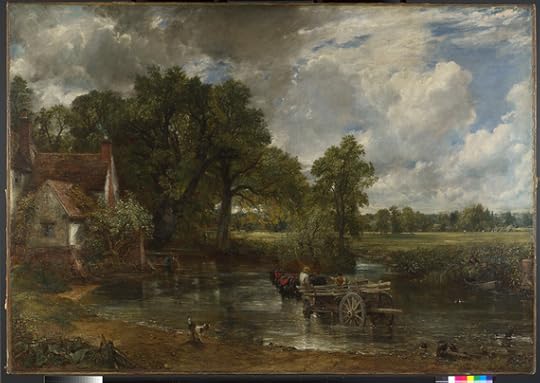
John Constable remains one of Britain's best-loved artists and I don't think you will ever see a more thorough examination of his approach to and design of his work than this new exhibition at the Victoria and Albert Museum.
This exhibition brings together over 150 works of art including oil sketches, watercolours, drawings and engravings, as well as some of Constable's most famous completed paintings.
And the purpose of such a comprehensive collation? To explore how Constable studied and learnt from the works of other great painters to develop and hone his technique, and then how he constantly sketched and invested in preparatory work to finalise his major works.
There is often a presumption with Constable that he was a painter who worked directly from nature. However though he studied natural landscapes extensively, Constable revered painters such as Claude Lorrain, Rubens and Turner and studied their techniques and compositions in great depth.
And the impact of those studies is highlighted here as the V&A has put a few paintings from Gainsborough, Turner and Claude Lorrain alongside some of Constable's work to show how Constable replicated certain elements.
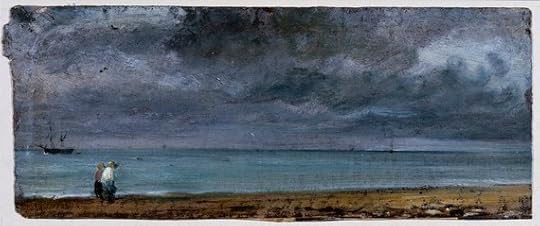
I understand the purpose of this but often I found Constable's work did not always compare favourably. For example, Constable studied Rubens' Landscape by Moonlight and attempted to replicate the impact of light falling on figures in the night in a painting of his own but not with the same success.
But then again, his Dedham Vale 1802, which is based on a composition from Claude Lorrain's Landscape with Hagar and the Angel, was wonderful. Swings and roundabouts, I guess.
A significant number of Constable's most famous works are included in the display, secured through loans from the Tate, the Royal Academy, the National Gallery and Philadelphia amongst others.
Many are familiar with works such as The Hay Wain, The Leaping Horse and Salisbury Cathedral from the Bishop's Grounds. But here the V&A has shown these alongside much of Constable's vast preparatory work that he undertook for each painting. Dozens and dozens of sketches where he'd work on composition, colour, and light and shade are a great testament to Constable's forensic preparation and his admirable work ethic.
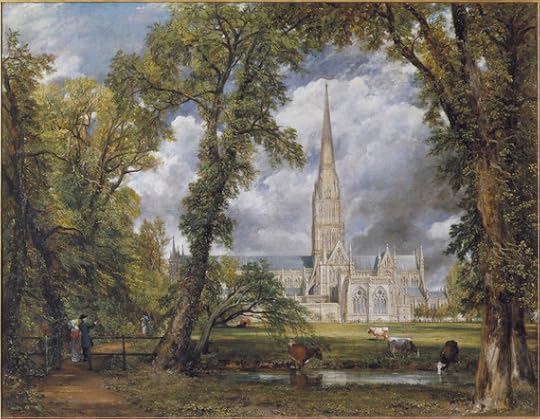
As an example, on show is Willy Lott's House, an oil sketch of a rural scene of a dog by a river that would eventually form part of The Hay Wain. Only this sketch was made 10 years before The Hay Wain was completed, which gives you some idea of how long Constable weighed up and worked on his ideas.
Seeing this preparatory work was, for me, the real highlight of the exhibition. In particular, his oil sketches of locations as varied as Brighton beach, Weymouth Bay, Hampstead Heath, even his cloud studies were wonderful. Indeed I found them more emotive than many of his larger finished works.
Supporting these pictures, the V&A has also put on display a number of Constable's sketchbooks, which he'd use on his travels. The detail in the drawings within them is almost forensic, a great testament to the effort Constable put in to studying what was around him.
But in spite of its impressive scale, whether you think this exhibition is 'good' or 'great' I suspect will come down to whether you actually like Constable's paintings.
Constable is certainly a divisive artist with as many detractors as fans. His often tranquil, idyllic landscapes lack the energy and bold brushwork of Turner, who was painting at the same time as Constable (and who has his own exhibition currently at Tate Britain) and even at the time critics were not always kind to Constable, finding his use of highlights in pictures such as The Opening of Waterloo Bridge distracting in their extravagance (but then what do critics know).
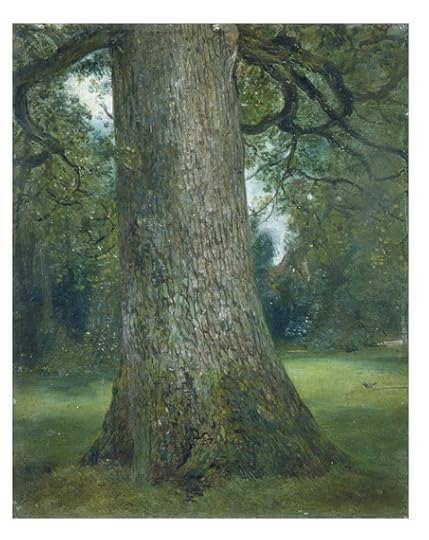
However though I may not be Constable's biggest fan, I found this exhibition encouraged me to reconsider my assumptions of him. In addition to the oil sketches I also loved his more detailed work on natural landscapes, such as Study of the Trunk of an Elm Tree and Trees at Hampstead.
Quite whether Constable was a 'Master,' as suggested by the title the V&A has chosen for this exhibition, might be questionable. But what isn't in question is the work that has gone into bringing together this undeniably detailed and wide-ranging exhibition. As an examination of Constable's method, this show is excellent.
Victoria and Albert Museum, London to January 11, 2015
Image credits:
1. The Hay Wain, Oil on canvas Artist: John Constable Date: 1821 Credit line: © The National Gallery, London 2014
2. Brighton Beach, Oil on paper Artist: John Constable Date: 1824 Credit line: © Victoria and Albert Museum, London
3. Salisbury Cathedral from the Bishop's Ground, Oil on canvas Artist: John Constable Date: 1823 Credit line: © Victoria and Albert Museum, London
4. Study of the Trunk of an Elm Tree, Oil on paper Artist: John Constable Date: c.1824 Credit line: © Victoria and Albert Museum, London
Published on September 19, 2014 08:50
September 14, 2014
I Never Expected to See a Mermaid Fossil at the Science Museum...
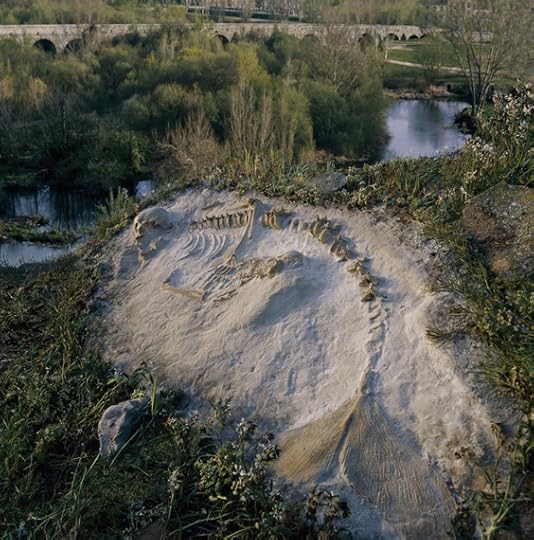
I think we can safely say that I never expected to see a mermaid fossil at the Science Museum. Nor photographs of a snake with legs or a flying monkey with a unicorn's horn. But welcome to the weird and wonderful world of Joan Fontcuberta and the new Stranger than Fiction exhibition of his work.
Joan Fontcuberta is an artist whose works investigate the truth and reliability of photography. How does he do this? He falsifies miracle in photography to cause us to question truth in what we see.
Now, Joan Fontcuberta is a pretty controversial character. Many consider him to be a pretentious charlatan so I was surprised the Science Museum put on this exhibition. Yet actually this exhibition is not only entertaining, it actually goes far in proving the importance of science and the perils in believing what we are shown.
The first part of the exhibition is dedicated to Fauna. Whether it's squirrels with snakes as their tail, armadillos with crocodile heads or deer with wings, the variety of the animal hybrids and chimeras created is quite extraordinary.
What surprised me most though was the extent of the work Fontcuberta has undertaken to 'prove' his forgeries as these creatures are all 'verified' not just through photographs, but also with sketches, forged field diaries and 'sound recordings'... Even stuffed versions of the 'animals' researched are available to gawp at.
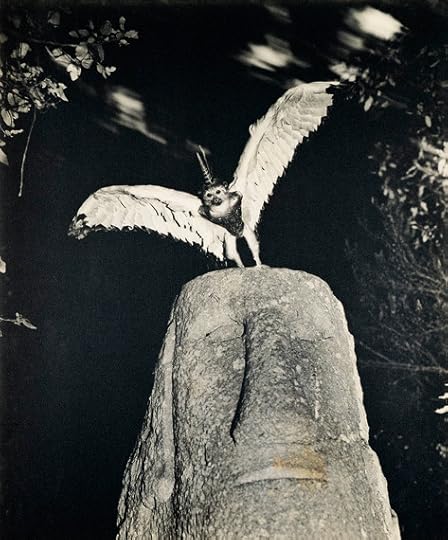
The most eye-catching part of the exhibition though is Sirens and its mermaid fossils.
One of the 'fossils' Fontcuberta created is on show and it is supported by some impressive underwater photography of the items being found in situe on ocean floors. Even videos of the exploratory dives were made and these too run on loop nearby.
Fontcuberta has also examined landscapes and even astronomy in his work.
In Orogenesis, a relatively recent project completed in 2002, Fontcuberta looked at landscape photography. Usually, the drama and majesty of mountains, forests and waterfalls is a reminder of the power of nature, almost of its permanent unmoveable presence.
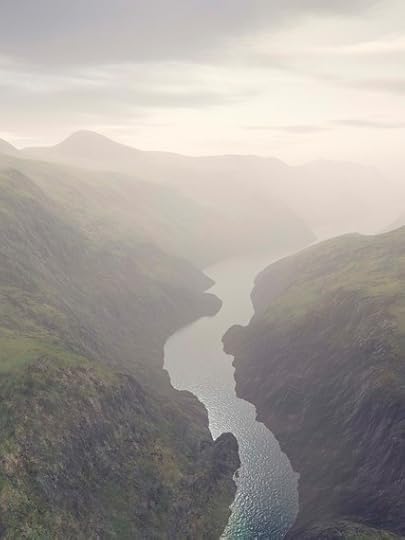
Yet Fontcuberta has digitally manipulated pre-existing landscape photography using a topographic computer program. As he explains in a video clip on show, Fontcuberta found this particularly interesting as he felt he was fooling a computer as well as his audience, adding a new contemporary dimension to his work.
For me, I found the section on miracles the most interesting.
In this section, Fontcuberta brings to life the old trends of spirit photography to show a clandestine order of monks who can perform miracles such as weeping blood, levitation and correlative deconstruction (passing through walls).
I found these images an interesting and important swipe at those false religions that trade, or have traded, on such 'miracles' as a means to exploit believers.
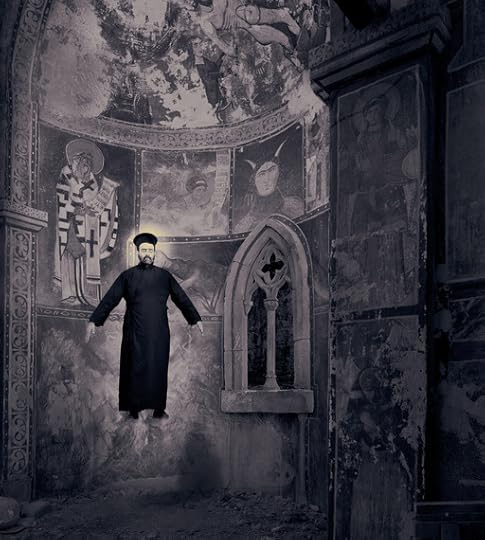
At the close of the exhibition is a film of an interview with Fontcuberta, which also looks at some of his works. The most interesting aspect of this was Fontcuberta's assertion was that his 'miracles' fooled so many as so many were willing to believe it.
I suppose there is something in that as, whether conditioned by society or otherwise, so many of us would like to believe in mermaids and unicorns, that fantasy borne and romanticised through legend. Just like those who are still determined to prove that the Loch Ness monster exists.
The exhibition is open until November but Joan Fontcuberta will be talking with curator Greg Hobson at the Museum on Monday, October 27th, which will be a great opportunity to hear from and ask questions to the man himself.
Fontcuberta's work may not be science per se but this exhibition is very effective in making its point. The phrase "I'll believe it when I see it" is a dangerous one. Do we put too much faith in photography? Why do we believe when we see for ourselves?
Science demands proof beyond images and that is where this exhibition makes sense. For no matter how much we want to believe otherwise, this really will be your only opportunity to see a mermaid fossil.
Science Museum, London to November 9, 2014
Image credits:
1. Hydropithecus of Cerro de San Vicente, 2006 from the Sirens series by Joan Fontcuberta © Joan Fontcuberta
2. Cercophitecus Icarocornu from the Fauna series by Joan Fontcuberta and Pere Formiguera, 1985 © Joan Fontcuberta and Pere Formiguera
3. Bodyscape (Heel), 2004 from the Orogenesis series by Joan Fontcuberta © Joan Fontcuberta
4. The Miracle of Levitation, 2002, Joan Fontcuberta © Joan Fontcuberta
Published on September 14, 2014 09:20
September 10, 2014
Late Turner Exhibition at Tate Britain
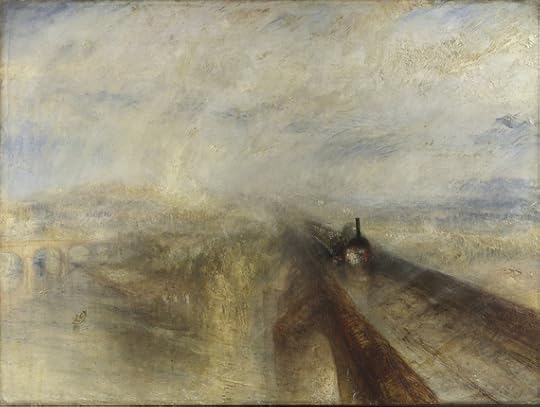
The Late Turner exhibition at the Tate Britain is the first ever museum exhibition of the later works in Turner's career. The works he produced in his 60s and 70s were some of his most remarkable as his understanding of light and colour, which he'd developed throughout his career, reached its climax.
To reflect the scale and skills of Tuner's output in the last 15 years of his life, the Tate has brought together a vast and glorious collection of the great man's oils and watercolours. Many are from Turner's generous bequest he left to the nation on his death but the show also includes rarely seen pieces and loaned works from across the world.
An example of this is Modern Rome - Campo Vaccino 1839, which is on loan from the Getty Museum in California and is shown here alongside its pair, Ancient Rome - Aggripina Landing with the Ashes of Germanicus, 1839. These pieces haven't been seen side by side since 1839.
The purpose of this exhibition is not just to showcase Tuner's extraordinary work from the last 15 years of his life but also to challenge the notion that artistic creativity declines with advancing age.
The triumph of these works and their technical excellence show this contrast between Turner the ageing man and Turner the creative artist. There is a sense of freedom in Turner's works at this stage, as if old age was freeing him of any shackles on pretence or need to court acclaim. But given his age, no doubt Turner must have been thinking about his legacy as an artist.
Despite his advancing years, Turner undertook more than a few overseas tours. A lovely anecdote included in the exhibition comes from a colleague who witnessed Turner hard at work sketching in his book, even late at night, whilst him and others idled away the hours.
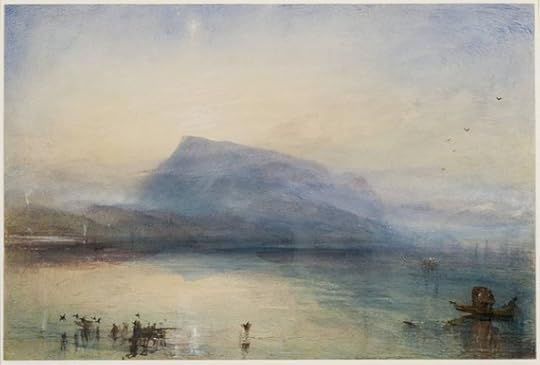
Turner produced a vast array of landscape watercolours from these travels, works that show a master at the height of his powers. Whether it was the Italian Lakes, Mont Blanc or the Rhine, the washes and detail within these works are incredible. The landscapes are so serene yet beautifully reflect the scale and beauty of nature.
As well as these landscapes, Turner also painted Venice - a popular subject for artists at that time. However whereas others focused on realistic representation of Venice whilst also showcasing it in all its pomp and grandeur, Turner's paintings show a beautiful city in decline, its better days behind it.
This, as well as often inaccurate reflections of the city's architecture (whether due to preference or faded memory) angered critics and patrons who found his atmospheric style unsettling. So much so that one set of patrons refused to pay for a set of paintings they commissioned and returned them (how that family's ancestors must regret that now).
But Turner was a wealthy man in his later years, not dependent on selling paintings to survive and so this afforded him a greater freedom in his work.
Turner is often seen as an incredibly modern painter - embracing contemporary culture such as steam-power as well as his paintings reflecting a sense of the impressionism and abstract that would follow him. However Turner returned to many classical themes in his later works, which is highlighted in the exhibition.
Many of the paintings on display reflect Turner's interest in classical subjects such as biblical stories and mythology, themes he revisited many times throughout his career. The paintings that resulted from merging these interests with his mastery of light and colour created some fascinating works.
Two works on the biblical flood Light and Colour (Goethe's Theory) - the Morning after the Deluge, 1843 and Shade and Darkness - the Evening of the Deluge, 1843 show how Turner's unique approach to the subject matter refreshes a common subject, reflecting nature's scale and devastation so vividly in a way that more traditional works were unable to.
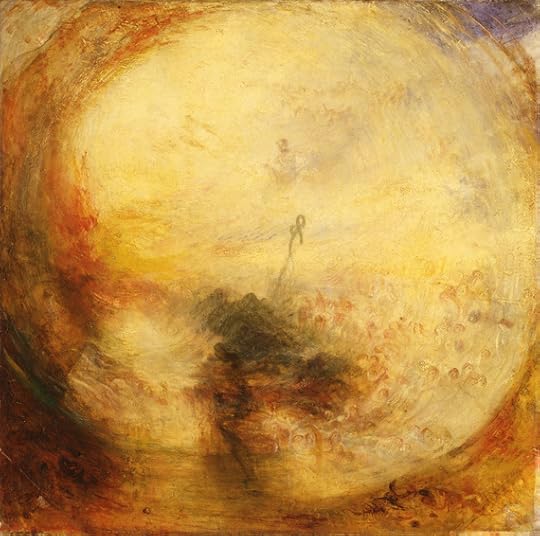
At other times the merging of his modern style with classical subjects can seem a little jarring, such as his Bacchus and Ariadne which seems to have transported the exact composition of the figures from Titian's masterpiece, which hangs in the National Gallery, into a typically Turner landscape.
Up close, the brushwork and the intensity of Turner's work remains awe-inspiring and this can be most clearly seen in his works of more modern themes such as steam-power and whaling, and contemporary seascapes.
Rain, Steam and Speed - The Great Western Railway, 1844, is a famous Turner and this intensely powerful work is on show here, reflecting Turner's fascination with steam power, a subject which few other artists showed any interest in despite its revolutionary effect on British industry. Painted when Turner was about 69, it is a great reflection of how Turner remained bold and motivated in capturing new subjects as well as classical ones even at this late stage of his career.
Turner's works on the sea remain my personal favourite though and the Tate has brought a large number of those together, including works Turner completed specifically on whaling. Though he never experienced a whaling trip directly, Turner immersed himself in field reports on travel notes of such trips to capture their spirit and adventure. The resulting oils and watercolours are an evocative reflection of that enduring battle of man versus nature.
To be in a room filled with Turner's seascapes is like a wonderful assault on the senses. With these huge canvases and the furious, bold brushstrokes, it's impossible to think that anyone will ever capture the power of the sea quite like Turner.
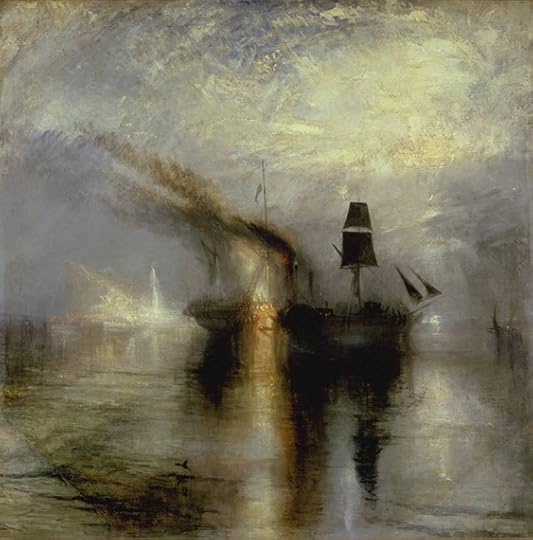
In addition to this fantastic array of paintings, the Tate has also put on show a large number of Turner's sketchbooks. Often used on his travels to capture topography and to details, the books reflect a mind and body that was as keen as a man half his age.
In addition to many great works, Turner also bequeathed the contents of his studio to the nation and the inclusion here of his palette and spectacles adds a personal touch to this outstanding and illuminating exhibition.
Tate Britain, London to January 24, 2015
Admission £15 (concessions available)
Image credits:
1. J.M.W. Turner, Rain, Steam, and Speed - The Great Western Railway 1844 © The National Gallery, London
2. JMW Turner The Blue Rigi 1841-2 Watercolour on paper support: 297 x 450 mm on paper, unique © Tate. Purchased with assistance from the National Heritage Memorial Fund, the Art Fund (with a contribution from the Wolfson Foundation and including generous support from David and Susan Gradel, and from other members of the public through the Save the Blue Rigi appeal) Tate Members and other donors, 2007
3. JMW Turner, Light and Colour (Goethe's Theory) - the Morning after the Deluge - Moses Writing the Book of Genesis, 1843 Oil paint on canvas support: 787 x 787 mm painting © Tate. Accepted by the nation as part of the Turner Bequest 1856
4. JMW Turner, Peace - Burial at Sea, exhibited 1842 Oil paint on canvas support: 870 x 867 mm © Tate. Accepted by the nation as part of the Turner Bequest 1856
Published on September 10, 2014 04:21
September 9, 2014
'Prozac Nation': 20 Years On
In September 1994 Elizabeth Wurtzel's first book Prozac Nation was published and a new era of confessional-style memoir was born. Further than that, Elizabeth's frank and unsympathetic portrayal of her battles with depression was revolutionary in a way that now, even 20 years later, we're still getting used to.
Finally we are beginning to talk about depression and mental illness but back in 1994, this wasn't common so many did not know how to react to Elizabeth's frank, angry writing. So focused was the book on herself and her struggles that many ill-informed commentators accused Elizabeth of self-indulgence, even narcissism.
But this shows just how honest Elizabeth's writing was as for depressives, the dark cloud, the black dog consumes completely affecting their outlook to the detriment of everything else.
In style and in content, Prozac Nation was ahead of its time. I recently re-read the book both as preparation for this article but also to see how it has stood up over the years.
When I bought the book 20 years ago, I had just started University - much like Elizabeth in her book - and I remember finding the book heavy-going and intense. The subject matter was desperate and dark but it was also written in a relentlessly morbid way with no let up at all. The first line is "I hate myself and I want to die." It's a bold statement of intent for the rest of the book.
Of course, this was deliberate and it's interesting, reading it again after all this time, how you appreciate not just the clever way Elizabeth employs this relentless navel-gazing self-obsessed first-person approach but how she bravely stuck to it throughout the editing process.
Not only does this bring an interesting perspective to the main character - no character should be entirely sympathetic - but of course, this is what it's like with depression. Even Elizabeth refers to herself and other depressives in the book as "the walking dead."
So intense is the emotion in the writing that at times, you feel more for Elizabeth's mother than you do for Elizabeth. Her mother desperately doesn't know what to do for the best and propping up her daughter is taking over her life. As Elizabeth states "though she loves me very much, she no longer wants to be the one I run to."
Elizabeth's observations are sharp and downbeat. "Depression was the loneliest fucking thing on earth" she writes, and in the book it's clear how depression robs her of any and every opportunity to make friends let alone healthy, intimate relationships that last.
20 years on, Elizabeth's writing is so bold and contemporary that if you had never heard of the book you could be forgiven for thinking it had just been published for the first time.
I wouldn't go so far as to say it's common but we are certainly getting more used to reading and hearing of people in the public eye opening up about their battles with mental illness but I wouldn't say as a society we are in a place where we are open and kind in our discussions on the subject.
Yet what I found compelling in this book is not just Elizabeth's account of her battle with depression but also her battle with the medical system that's supposedly in place to help her. It's hard to argue that 20 years later, we're in a better place in understanding and supporting those in need.
Elizabeth runs through the roll-call of psychiatrists and counsellors wheeled out to help her, and you feel she is seen as an unfixable case just passed around a medical profession that is unsure how to treat mental illness. Indeed it's interesting how the one doctor Elizabeth ends up placing faith in, battles so hard to keep her out of a mental institution fearing it's the worst place for her to be.
"We live in a drug culture, both legal and otherwise" Elizabeth observes of her doctors' pleading with her to take medication. And it's hard to disagree that we've moved on that much since.
As a society we are (slowly) becoming more open about discussing mental illness and Prozac Nation remains a stark, unromantic reflection of depression as a crippling state of mind that robs you of any and all joy in life. But 20 years later, I am more aware (and just as impressed) by the book's technical style.
Prozac Nation is written in the first person throughout. And it's a memoir. These are two aspects that even today, new writers are advised to avoid. Yet Elizabeth ignored these rules and produced a classic.
Its influence in the popularity of the first-person memoir cannot be underestimated, nor can the fact that this book was written by a woman. Both of these aspects are critical in its classification as a modern classic.
And for this book, it is critical that it is in the first-person as the reader is forced into an intimacy with Elizabeth, and forced to see the world through her warped perspective.
Elizabeth was a writer of some repute even at this young age and this is reflected in some great passages on the impact of depression on her life that many have struggled to emulate since.
"Slowly, over the years, the data will accumulate in your heart and mind, a computer program for total negativity will build into your system, making life feel more and more unbearable.... Then one day you realizse that your entire life is just awful, not worth living, a horror and a black blot on the white terrain of human existence."
It was brave of Elizabeth not to court sympathy in her writing. She is open on how nasty depression could make her, referring to the silent competition with her peers at Harvard who were also suffering with depression with the acerbic "Still, no-one's desperation came close to matching mine."
The book has often drawn comparisons with Sylvia Plath though I can't help but feel that's a lazy comparison that does a disservice to both writers. Both women wrote about mental illness but Elizabeth writes with more gritty and ugly realism than the more tragic Plath.
For me, Prozac Nation has always been one of my favourite books. I've always admired its contemporary colloquial style, fearlessness and lack of apology. Elizabeth is incredibly exposed in this book and it is brave writing from someone so young (she was only 26 when she wrote this), that still today I can't help but admire its courage.
But also it remains today a terrific and terrifying testament to how a battle with mental illness often results in no victory. "That's the thing about depression: A human being can survive almost anything, as long as she sees the end in sight. But depression is so insidious, and it compounds daily, that it's impossible to see the end. The fog is like a cage without a key."
Finally we are beginning to talk about depression and mental illness but back in 1994, this wasn't common so many did not know how to react to Elizabeth's frank, angry writing. So focused was the book on herself and her struggles that many ill-informed commentators accused Elizabeth of self-indulgence, even narcissism.
But this shows just how honest Elizabeth's writing was as for depressives, the dark cloud, the black dog consumes completely affecting their outlook to the detriment of everything else.
In style and in content, Prozac Nation was ahead of its time. I recently re-read the book both as preparation for this article but also to see how it has stood up over the years.
When I bought the book 20 years ago, I had just started University - much like Elizabeth in her book - and I remember finding the book heavy-going and intense. The subject matter was desperate and dark but it was also written in a relentlessly morbid way with no let up at all. The first line is "I hate myself and I want to die." It's a bold statement of intent for the rest of the book.
Of course, this was deliberate and it's interesting, reading it again after all this time, how you appreciate not just the clever way Elizabeth employs this relentless navel-gazing self-obsessed first-person approach but how she bravely stuck to it throughout the editing process.
Not only does this bring an interesting perspective to the main character - no character should be entirely sympathetic - but of course, this is what it's like with depression. Even Elizabeth refers to herself and other depressives in the book as "the walking dead."
So intense is the emotion in the writing that at times, you feel more for Elizabeth's mother than you do for Elizabeth. Her mother desperately doesn't know what to do for the best and propping up her daughter is taking over her life. As Elizabeth states "though she loves me very much, she no longer wants to be the one I run to."
Elizabeth's observations are sharp and downbeat. "Depression was the loneliest fucking thing on earth" she writes, and in the book it's clear how depression robs her of any and every opportunity to make friends let alone healthy, intimate relationships that last.
20 years on, Elizabeth's writing is so bold and contemporary that if you had never heard of the book you could be forgiven for thinking it had just been published for the first time.
I wouldn't go so far as to say it's common but we are certainly getting more used to reading and hearing of people in the public eye opening up about their battles with mental illness but I wouldn't say as a society we are in a place where we are open and kind in our discussions on the subject.
Yet what I found compelling in this book is not just Elizabeth's account of her battle with depression but also her battle with the medical system that's supposedly in place to help her. It's hard to argue that 20 years later, we're in a better place in understanding and supporting those in need.
Elizabeth runs through the roll-call of psychiatrists and counsellors wheeled out to help her, and you feel she is seen as an unfixable case just passed around a medical profession that is unsure how to treat mental illness. Indeed it's interesting how the one doctor Elizabeth ends up placing faith in, battles so hard to keep her out of a mental institution fearing it's the worst place for her to be.
"We live in a drug culture, both legal and otherwise" Elizabeth observes of her doctors' pleading with her to take medication. And it's hard to disagree that we've moved on that much since.
As a society we are (slowly) becoming more open about discussing mental illness and Prozac Nation remains a stark, unromantic reflection of depression as a crippling state of mind that robs you of any and all joy in life. But 20 years later, I am more aware (and just as impressed) by the book's technical style.
Prozac Nation is written in the first person throughout. And it's a memoir. These are two aspects that even today, new writers are advised to avoid. Yet Elizabeth ignored these rules and produced a classic.
Its influence in the popularity of the first-person memoir cannot be underestimated, nor can the fact that this book was written by a woman. Both of these aspects are critical in its classification as a modern classic.
And for this book, it is critical that it is in the first-person as the reader is forced into an intimacy with Elizabeth, and forced to see the world through her warped perspective.
Elizabeth was a writer of some repute even at this young age and this is reflected in some great passages on the impact of depression on her life that many have struggled to emulate since.
"Slowly, over the years, the data will accumulate in your heart and mind, a computer program for total negativity will build into your system, making life feel more and more unbearable.... Then one day you realizse that your entire life is just awful, not worth living, a horror and a black blot on the white terrain of human existence."
It was brave of Elizabeth not to court sympathy in her writing. She is open on how nasty depression could make her, referring to the silent competition with her peers at Harvard who were also suffering with depression with the acerbic "Still, no-one's desperation came close to matching mine."
The book has often drawn comparisons with Sylvia Plath though I can't help but feel that's a lazy comparison that does a disservice to both writers. Both women wrote about mental illness but Elizabeth writes with more gritty and ugly realism than the more tragic Plath.
For me, Prozac Nation has always been one of my favourite books. I've always admired its contemporary colloquial style, fearlessness and lack of apology. Elizabeth is incredibly exposed in this book and it is brave writing from someone so young (she was only 26 when she wrote this), that still today I can't help but admire its courage.
But also it remains today a terrific and terrifying testament to how a battle with mental illness often results in no victory. "That's the thing about depression: A human being can survive almost anything, as long as she sees the end in sight. But depression is so insidious, and it compounds daily, that it's impossible to see the end. The fog is like a cage without a key."
Published on September 09, 2014 16:00
September 3, 2014
Superb Horst: Photographer of Style Exhibition at V&A
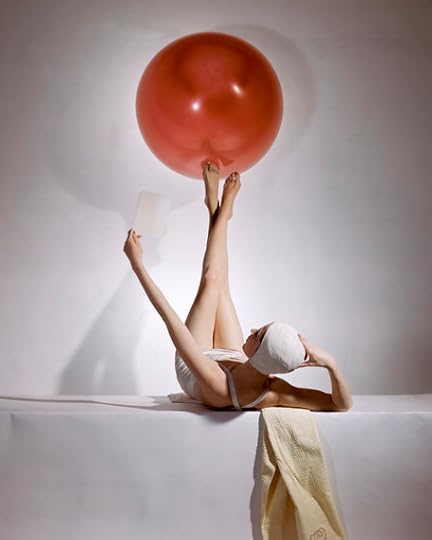
The Horst: Photographer of Style exhibition at the Victoria and Albert Museum is a definitive retrospective on the work of master photographer Horst P. Horst (known simply as Horst), one of the leading photographers of the 20th century.
This exhibition is vast. The V&A has filled room upon room with more than 250 photographs. This could have been overwhelming but Susanna Brown has curated the exhibition superbly as not only have the rooms been themed, but the photos are shown alongside some of Horst's sketchbooks, rare film clips of him at work, as well as haute couture garments from the time from the V&A's permanent collection, and numerous magazine clippings and covers of his work in print.
The result is a fascinating, exciting exhibition that contextualises Horst's work and allows us not just to understand the development of his signature style, but also to witness the profound changes in women, their fashion and their role in society as Horst's career spanned 60 years, and an incredibly formative and changing 60 years too - from the pre-war years to the 1980s.
Horst was a master in the manipulation of light and shadow in creating mood and shaping the human form. But these were developed skills and the early part of the exhibition, from the 1930s when he joined the ranks of Vogue, notes how his early work used to infuriate then-editor Edna Woolman Chase who grew exasperated with the amount of shadow Horst was using in his fashion photography, almost completely obscuring the garments.
But master it, he did, and with extraordinary effect as by the end of the decade he was established as one of the distinguished photographers in fashion and style.
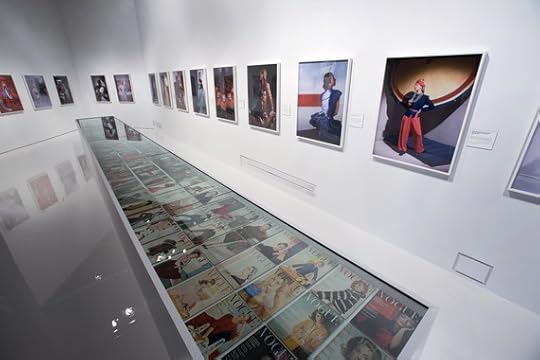
Of course, Horst's rise coincided with the rise of photography in the fashion press, which was quickly replacing illustrations and sketches. But his pre-eminence also coincided with the rise of Hollywood movie stars.
A whole room is dedicated to his portraits of these stars. Joan Crawford, Rita Hayworth, Marlene Dietrich, Bette Davis, Ginger Rogers... The roll-call of those who sat for him is impressive.
To some of these stars he was able to bring something new - his portrait of Marlene Dietrich, in particular, shows more of the real woman rather than the image on screen - but others such as Joan Crawford were impossible to get any kind of concession from. As Horst himself noted, her face was more a mask.
But this exhibition also looks beyond Horst's glamorous fashion photography and his celebrity portraits. Horst's work on male nudes, travel photography and the design in nature are all represented in the display.
The male nudes are superb, and almost all loaned to the exhibition from the private collection of Sir Elton John and David Furnish. Horst's nudes bear all the hallmarks of classical Renaissance art, with its emphasis on the idealised human form and again, using light and shadow to create a sculptural effect.
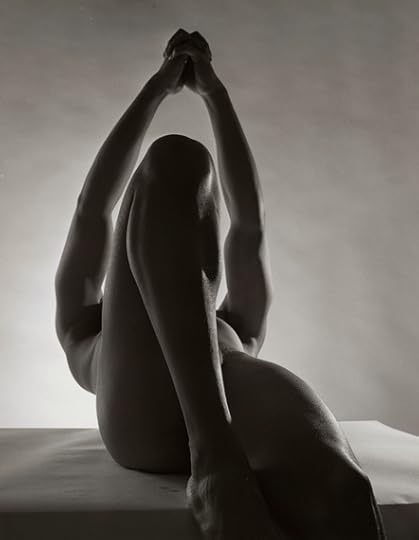
I also found his natural photography fascinating. Horst published Patterns from Nature in 1946, a book of close-up black and white images of plants, shells and minerals.
Taken in locations across the USA, these photos examine the architecture and form of nature. The shots are so forensic, so close-up that the subjects are taken out of their natural setting - an examination of their beauty through design rather than their place in the natural world.
There are also some surprises.
Horst was intrigued by surrealism and worked with Salvador Dali on his costumes for the Dream of Venus Pavilion, which was shown at the New York World Fair in 1939. His design with Dali fuses the erotic and sensual imagery with the surreal and the results are fascinating.
But, of course, this exhibition wouldn't be complete without the Mainbocher Corset, one of the most famous fashion photos ever.
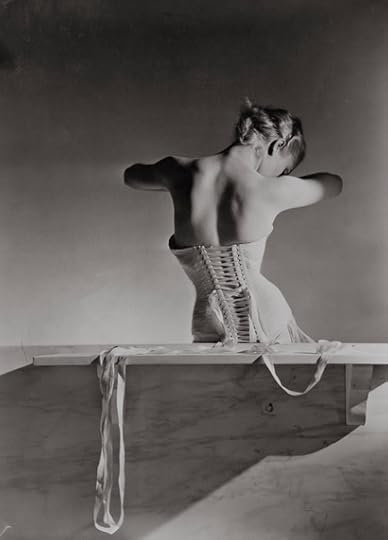
Here, the V&A has displayed a couple of the shots taken in this sitting, showing again how Horst played with the balance of shadow and light until he got the image he was after.
The photos are also shown alongside some of Horst's preliminary sketches for the shot. The sketches show plans for a plant to be included in the frame but this was obviously discarded at some point in the process.
As you weave through the galleries, the stylised black and white photography is atmospheric and completely absorbing. But then suddenly the exhibition hits you with a bright, vibrant burst of colour as Horst's large vintage prints are hung together in a white-walled room. The effect is wonderful and the setting really brings out the impact of this sudden rush of colour.
Horst's colour photographs are rarely exhibited because few of the vintage prints are still around but shown together, alongside a tableau of over 90 Vogue magazine covers from across the decades, the effect is wonderful.
This exhibition is superb, and not just interesting for its content but also as an illuminating overview of the career of one of the most influential fashion portrait photographers of the 20th century, and a study on how that craft was honed and polished over the years.
Victoria & Albert Museum, London to January 4, 2015
Admission £8 (concessions available)
Image credits:
1. Summer Fashions, American Vogue cover, : 15 May 1941 © Condé Nast / Horst Estate
2. Installation image of Horst - Photographer of Style © Victoria and Albert Museum, London
3. Male Nude, 1952 © Condé Nast / Horst Estate
4. Corset by Detolle for Mainbocher, 1939 © Condé Nast / Horst Estate
Published on September 03, 2014 07:56
August 30, 2014
British Manufacturing the Focus in Open for Business - Science Museum
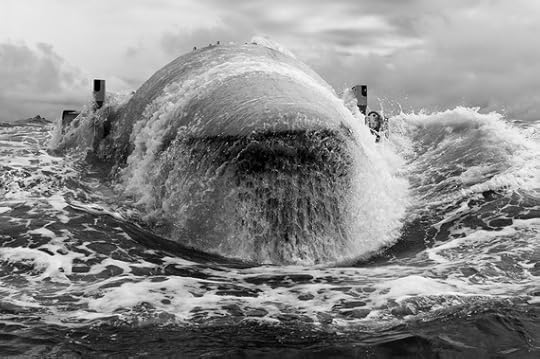
In 2013, Magnum Photos and Multistory commissioned nine photographers to capture the state and spirit of British manufacturing - its variety, its people and its processes.
Given the difficult economic conditions, that was quite a challenge. Yet the resulting exhibtion, Open for Business, is a fascinating insight into an industry that is surviving, even thriving, against quite extraordinary odds.
What immediately catches the eye is Stuart Franklin's stunning photos of manufacturing in Scotland. With an interest in the relationship between man and his environment, Stuart focused on the renewable energy companies - wind and wave - and the construction of the HMS Queen Elizabeth, the largest aircraft carrier in the Royal Navy's history.
His scale and dynamism in his work is impressive. A particular favourite for me was a powerful photo of the harnessing of wave power by the Pelamis Wave machines.
In contrast, David Hurn focused on small-scale bespoke textile and crafts industry in Wales. His series of colourful images capture the human element, the dependency on minute manually intensive work and the bespoke results it can bring.
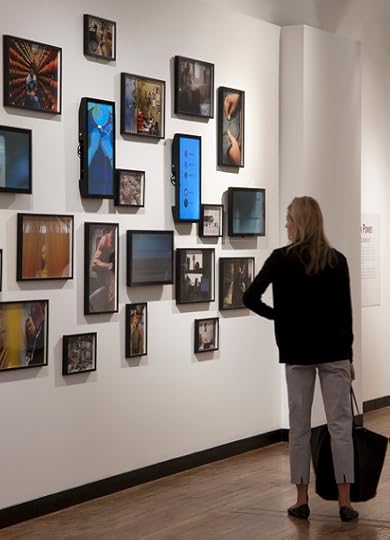
Being Welsh himself, David's photos played cleverly against the stereotype of Welsh industry as solely that of the (declining) coal mines. It also emphasised that where Britain cannot compete against the cheap mass production factories of the Far East, it can flourish if it focuses and invests in skilled labour.
A particular highlight was a selection of socks that Prince Charles had designed, taking into account regimental colours and designs, which were being woven by royal-appointed hosiery specialists Corgi Hosiery.
I had expected the photographs to be depressing, to reflect a sector in decline and a workforce shrinking in numbers and very much cogs in a wheel. Certainly that does come through in some pieces.
Peter Marlow's photography of metal and leather industries in the Black Country showed a hazardous workplace where dangerous and centuries old methods such as furnaces for smelting were still in use.
And through his portraits of the workforce, you could see the physical impact of decades of labour in these places. They were quite moving.
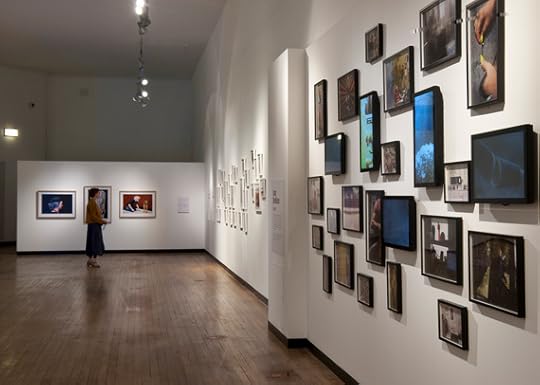
Similarly, there's plenty of drama in Mark Power's photos of the Nissan factory in Sunderland and Bombardier in Derby. A heavy black background gives his work a powerful feel yet it also lends his work a darkness.
Often the faces of the workforce in these pieces cannot be seen, giving them a functional appearance. And those faces that can be seen are often expressionless, emotions hard to read.
But plenty of the work on display also shows the creativity of British manufacturing, how it has developed and adapted to stay alive and stay competitive.
Chris Steele-Perkins focused on Plymouth, where firms such as Princess Yachts and Burt's Crisps had developed their profile in niche markets. These photos were bright and positive, with the employees almost playful.
And Jonas Bendiksen included VT loops of weaving machines amongst his photography of the textile industry in Bradford. There's both a happy rhythm and a depressing repetition in watching these machines constantly repeating the same process again and again.
Credit must also go to the Science Museum who has made an effort in the presentation. It would have been easy to just frame these photos up and hang them on the wall. Instead these have been collated in clusters, allowing you to immerse yourself in each region, as well as compare and contrast between them.
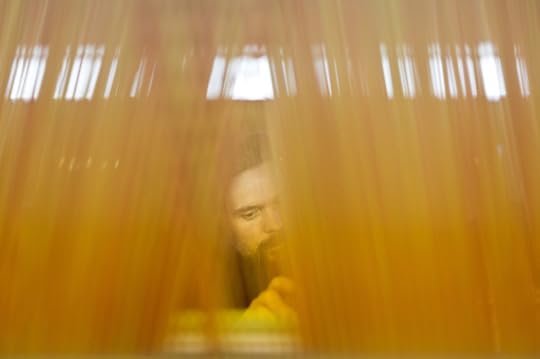
The intention was always for this to be a travelling exhibition, rather than have it rooted solely in London. So, after the Science Museum, it will travel to the University of South Wales, Newport; the Plymouth City Museum & Art gallery; Mshed, Bristol; and Street Level Photoworks, Glasgow.
Along with this display, the Science Museum is also hosting exhibitions on the history of mental illness treatment, the scientist James Lovelock and the work of controversial photographer Joan Fontcuberta. And that's alongside the Museum's expansive and impressive permanent collection so there is much to see on a visit.
But what you take away from this exhibition in particular is though the struggles remain, the adaptability and creativity within the British manufacturing industry deserves to be celebrated.
Science Museum, London to November 2, 2014
Admission Free
Image credits:
1. Stuart Franklin UK, Scotland. Renewable energy. The Sound of Hoy in the Orkney Islands generates some of the biggest waves in the UK. This wave energy is being harnessed by Pelamis Wave machines. The Old Man of Hoy in the background. 2013
2. Installation image © Science Museum, London
3. Installation image © Science Museum, London
4. Jonas Bendiksen GB, England, Bradford. A worker seen through the criss-crossing threadwork of a weaving machine. William Halstead, weavers of fine mohair and worsteds, operating since 1875. 2013
Published on August 30, 2014 03:39
August 27, 2014
The Paintings of Beryl Bainbridge, Somerset House
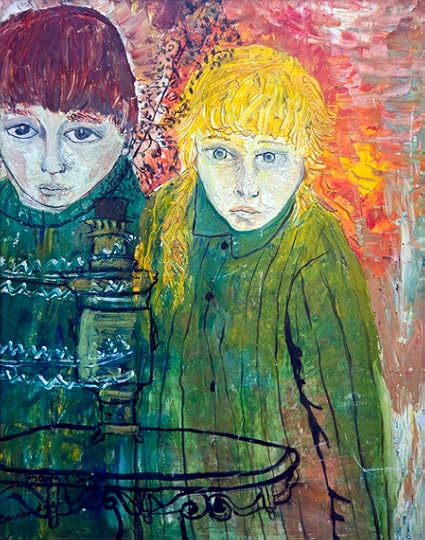
This exhibition from the Cultural Institute at King's College London offers a fascinating insight into a creative mind. Well known for her writing, this exhibition looks at Beryl Bainbridge's painting and drawing in the context of her writing output, and how each fed the other.
The variety of works that have been collated together is impressive - from a number of etchings and drawings of her children and partners, to large oil paintings that blur fact and fiction - and show Beryl's talent as an artist.
The paintings are full of emotion - some happy, some sad. Some humorous, others bittersweet or mournful but all of them are testament to a real talent.
Amongst the oil paintings on show are beautiful representations of her children, including the brightly coloured canvas Aaron and Jonjo, mid 1960s, and also The Bath, late 1950s, where the perspective taken of her children at bath-time transforms a simple bath into a womb.
The painting of her lover, Don McKinley, as Napoleon is both funny and sexually suggestive, and certainly so when it is shown alongside another painting where Napoleon is with a naked woman, possibly a younger Beryl, as it is here.
But a piece that really caught the eye was the collage of her mother, when younger, singing with an orchestra. A very affectionate piece of work.
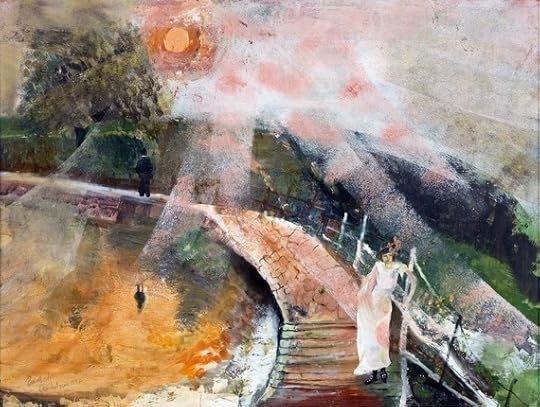
Beryl was a self-taught artist (as also with her writing) and there's an impression that this added to her creativity. Certainly you sense with these works that because Beryl was free from conforming to deadlines and requirements of life as a professional artist, this gave her a great freedom to paint subjects she wanted and as she saw them.
Some of Beryl's old journals and notebooks are included in the displays, as is a book Beryl wrote by hand when she was just 13, Filthy Lucre. All of these have sketches, small paintings, even photos clipped from newspapers in amongst them - evidence of how important Beryl found visual representation in her output.
Portraying historical events became a central theme in her work from the 1990s onwards. In her writing she was looking at subjects such as Dr Samuel Johnson (in According to Queeney, 2001), and the Crimean War (Master Georgie, 1998) but historical events also became a focus in her painting.
On display is a selection of paintings of two particular interests to Beryl at this time - the sinking of the Titanic and Captain Scott and his team's failed mission to the South Pole. Both subjects reflecting Beryl's interests in failed ambition and unsuccessful enterprises.
One of the eye-catching pieces in this part of the exhibition was, for me, The Titanic Lifeboat, late 1990s, an oil and collage piece of work of the lifeboats leaving the sinking ship. Yet included amongst the face of those saved are photos cut from newspapers and magazines, and those faces include Hitler's.
It's an interesting perspective on the role of fate and luck in events such as this, and really flips your sympathy for those rescued. We want to be thankful for those saved in such tragedies - but how would we feel if we knew that amongst those saved were some that perhaps we wish had not been so lucky?
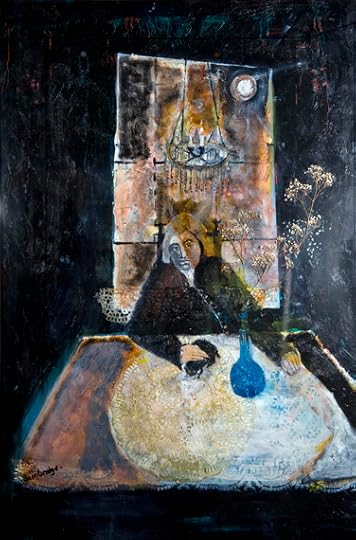
Also included in this section is Captain Oates: I May Be Some Time, a painting which had pride of place over Beryl's mantelpiece in her living room. Given how dark and tragic this really quite brilliant painting is, it's a little surprising that Beryl would want it in her front room. But actually there is much that is surprising in Beryl's interior design.
This exhibition uses these paintings as a way in to Beryl's life away from her writing so there are also two video clips running on loop in the show - a BBC Arena documentary and a film produced by her grandson that followed Beryl for a year.
These are genuinely fascinating and give more insight to the woman behind the work. A few oddities are thrown up such as Beryl's love for the Rolf Harris tune, Two Boys - a song she loved so much she insisted it was sung at her birthday each year and also at her funeral, which makes for uncomfortable viewing for us now.
But this footage really opens your eyes to how this creative mind lived. The footage from her home reveals a house rammed full of paintings, books, stuffed animals, tacky religious icons and bric-a-brac. The interiors are almost overwhelming. Even the hall wasn't exempt with Eric, a full-sized stuffed buffalo, filling the cramped space.
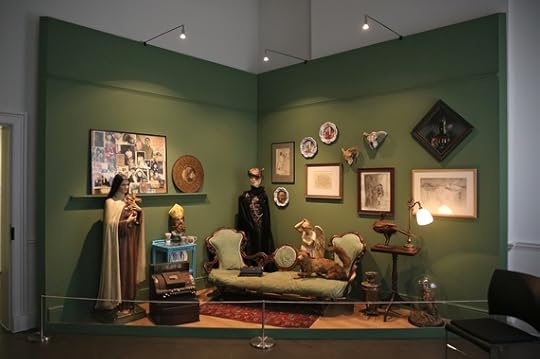
It's fascinating though, to see how such a creative mind lived. However the decision to set aside one of the gallery rooms to a re-imagination of a room from Beryl's house seems a bit unnecessary when there is so much coverage of the real thing elsewhere in the show.
What you take away from this exhibition though is a real understanding and appreciation for the fact that art was part of Beryl's daily life, and that her talent wasn't just limited to writing.
Beryl was clearly an accomplished artist and I came away thinking, how wonderful that she was able to express herself so well through so many art forms - a real lesson in not having any boundaries to how you express yourself.
Inigo Rooms, Somerset House to October 19, 2014
Admission Free
Image credits:
1. Aaron and Jojo (mid 1960s, oil on board) © The Estate of Beryl Bainbridge
2. Boarding The Titanic (1992, oil on board) © The Estate of Beryl Bainbridge
3. Dr Johnson in Albert Street with his Cat Hodge (2000, oil on board) © The Estate of Beryl Bainbridge
4. Art & Life, The Paintings of Beryl Bainbridge © Jana Chiellino
Published on August 27, 2014 10:31



